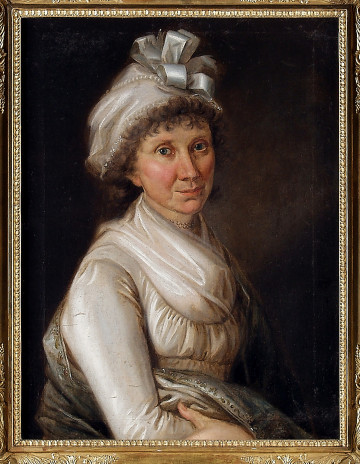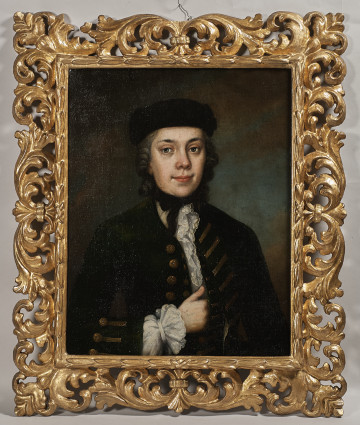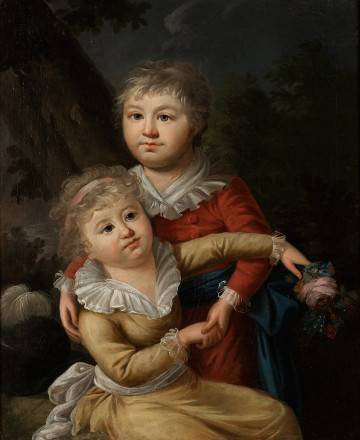
Portrait of Aleksandra Potocka, née Lubomirska
2nd half of the 19th century
Castle Museum in Łańcut
Part of the collection: Money on Polish territory in the Middle Ages
After the collapse of the reign of Bolesław Śmiały (1058-1079) and his death in exile in Hungary in 1081, his brother Władysław Herman (1081-1102) assumed the throne in Poland. During more than twenty years of his rule he minted denars in one iconographic type with the representation of the ruler on the obverse, described on some pieces with the princely name VLADIZLAVS, and a three-towered building on the reverse, sometimes surrounded by the inscription CRACOV, indicating the location of the mint. Denars without a mint were probably struck in Płock, the second seat of the duke. The iconography of the obverse of these coins refers to the ducal denarius of Bolesław the Generous, while the representation on the reverse is taken from the royal denarius of this ruler. On the denarii of Władysław Herman the domed finials of the buildings were soon replaced by roofs with a cross on each tower. At the same time, unlike on the denarii of Bolesław the Bold, the figure of Prince Władysław is not accompanied by the insignia of power, such as a sword, spear or crown. It was an expression of the prince's resignation from his aspirations to obtain the royal crown and sovereignty of the Emperor.
While the royal denars of Bolesław the Generous contained only a dozen or so percent of silver, the following issues of Władysław Herman had at least 50% of silver. That was due to the discontinuation of the fiscal monetary policy of Bolesław the Bold, which aroused social discontent and could have been one of the reasons for the rebellion against his rule. The silver denars in the hands of Władysław Herman served to consolidate support for him, especially in the circles which brought him to power. The devalued royal denarii of Bolesław the Bold were withdrawn from use.
The circulation of the denars of Władysław Herman was limited mainly to Lesser Poland with the Sandomierz and Lublin lands, Mazovia, and to a lesser extent Silesia and central Poland. These coins remained in use for several decades until the early 1240s.
Tomasz Markiewicz
Author / creator
Dimensions
cały obiekt: diameter: 15,3 mm
Object type
numismatic
Technique
stamp minting
Material
silver
Creation time / dating
Creation / finding place
Owner
The National Museum in Lublin
Identification number
Location / status

2nd half of the 19th century
Castle Museum in Łańcut

3. ćwierć XVIII wieku
Castle Museum in Łańcut

1. ćwierć XIX wieku
Castle Museum in Łańcut
DISCOVER this TOPIC
Museum of King Jan III's Palace at Wilanów
DISCOVER this PATH
Educational path